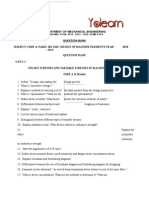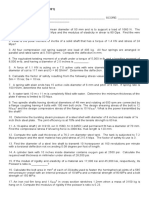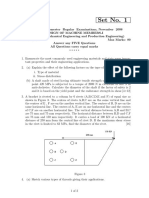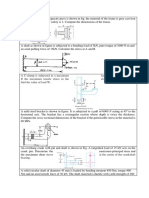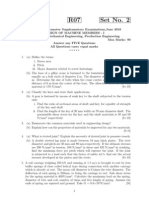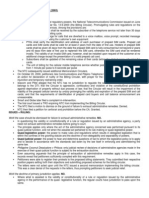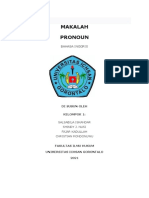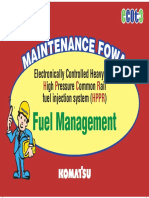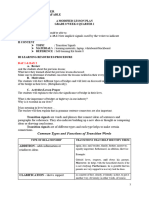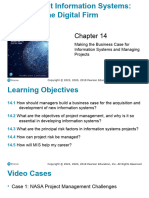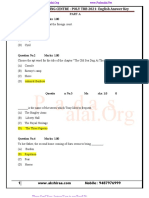UNIT I
PART-A
1. Define factor of safety.
2. What are the causes of stress concentration?
3. Discuss the needs of factor of safety.
4. What is endurance limit?
5. List out the various phases of design process.
6. What are the factors that affect notch sensitivity?
7. What is 'Adaptive design and Optimum design'?
8. Describe material properties, stiffness and resilience
PART-B
1. A hot rolled steel shaft is subjected to a torsional moment that varies from 330 N-m
clockwise to 110 N-m counter clockwise and an applied bending moment at a critical section
varies from 440 N-m to -220 N-m. The shaft is of uniform cross-section and no keyway is
present at the critical section. Determine the required shaft diameter. The material has an
ultimate strength of 550 MN/m² and a yield strength of 410 MN/m². Take the endurance
limit as half the ultimate strength, factor of safety of 2, size factor of 0.85 and a surface
finish factor of 0.62.
2. A hollow shaft of 40 mm outer diameter and 25 mm inner diameter is subjected to a twisting
moment of 120 N-m, simultaneously, it is subjected to an axial thrust of 10 kN and a bending
moment of 80 N-m. Calculate the maximum compressive and shear stresses.
3. Determine the thickness of a 120 mm wide uniform plate for safe continuous operation, if
the plate is to be subjected to a tensile load that has a maximum value of 250 kN and a
minimum value of 100 kN. The properties of the plate material are as follows: Endurance
limit stress 225 MPa and Yield point stress 300 MPa. The factor of safety based on yield
point may be taken as 1.5
4. A mild steel bracket is shown in figure. It is subjected to a pull of 5000 N acting at 45 deg to
its horizontal axis. The bracket has a rectangular section whose depth is twice the thickness.
Find the cross-sectional dimensions of the bracket, if the permissible stress in the material of
the bracket is limited to 50 MPa.
5. Determine the diameter of a circular rod made of ductile material with an endurance limit is
250 MPa and tensile yield strength of 350 MPa. The member is subjected to a varying axial
load from -300 kN to 700 kN and has a stress concentration factor is 1.8. Take factor of
safety as 2.
�6. The load on a bolt consists of an axial pull of 10 kN together with a transverse shear force of
5 kN. Find the diameter of the bolt required according to (i) Maximum principal stress
theory; (ii) Maximum shear stress theory; (ii) Maximum principal strain theory; (iv)
Maximum strain energy theory; and (v) Maximum distortion energy theory. Take permissible
tensile stress at elastic limit = 100 MPa and poisson's ratio = 0.3. Analyze bolt material and
loading condition with the results obtained.
UNIT II
PART-A
1. What theories of failure are applied in shaft design?
2. List any two advantages of rolling contact bearings over sliding contact bearings.
3. Write down the stresses that are induced in the shafts under different load conditions.
4. List out any four properties of sliding contact bearing materials.
5. A line shaft rotating at 200 rpm is to transmit 20 kW. It may be assumed to be made of mild
steel with an allowable shear stress of 42 MPa. Determine the diameter of the shaft,
neglecting the bending moment on the shaft.
6. State any four advantages of rolling contact bearing.
7. How is the strength of a shaft affected by the keyway?
8. What is the rating life of a rolling contact bearing?
PART-B
1. A shaft is supported on bearings A and B, 800 mm between centres. A 20° straight tooth
spur gear having 600 mm pitch diameter, is located 200 mm to the right of the left hand
bearing A, and a 700 mm diameter pulley is mounted 250 mm towards the left of
bearing B. The gear is driven by a pinion with a downward tangential force while the
pulley drives a horizontal belt having 180° angle of wrap. The pulley also serves as a
flywheel and weighs 2000 N. The maximum belt tension is 3000 N and the tension ratio
is 3 1. Determine the maximum bending moment and the necessary shaft diameter, if
the allowable shear stress of the material is 40 MPa.
2. Design a journal bearing for a centrifugal pump from the following data: Load on the
journal 20,000 N; Speed of the journal = 900 r.p.m.; Type of oil is SAE 10, for which the
absolute viscosity at 55°C = 0.017 kg/m-s; Ambient temperature of oil 15.5°C; Maximum
bearing pressure for the pump 1.5 N/mm². Calculate also mass of the lubricating oil
required for artificial cooling, if rise of temperature of oil be limited to 10°C. Heat
dissipation coefficient = 1232 W/m²/°C.
3. A hoisting drum 0.5 m in diameter is keyed to a shaft which is supported in two bearings
and driven through a 12:1 reduction ratio by an electric motor. Determine the power of
the driving motor, if the maximum load of 8 kN is hoisted at a speed of 50 m/min and
the efficiency of the drive is 80%. Also determine the torque on the drum shaft and the
speed of the motor in r.p.m. Determine also the diameter of the shaft made of
machinery steel, the working stresses of which are 115 MPa in tension and 50 MPa in
shear. The drive gear whose diameter is 450 mm is mounted at the end of the shaft such
� that it overhangs the nearest bearing by 150 mm. The combined shock and fatigue
factors for bending and torsion may be taken as 2 and 1.5 respectively.
4. Design a journal bearing for centrifugal pump for the following data: Load on the journal
= 12 Kn. Diameter of the journal = 75 mm. Speed 1440 rpm. Atmosphere temperature =
160C. Operating temperature of oil = 60°C. Absolute viscosity of oil at 600C = 23cp.
5. A mild steel shaft transmits 20 kW at 200 r.p.m. It carries a central load of 900 N and is
simply supported between the bearings 2.5 meters apart. Determine the size of the
shaft, if the allowable shear stress is 42 MPa and the maximum tensile or compressive
stress is not to exceed 56 MPa. What size of the shaft will be required if it is subjected to
gradually applied loads?
6. A simply supported shaft, diameter 50 mm, on bearing supports carries a load of 10 kN
at its center. The axial load on the bearings is 3 kN. The shaft speed is 1440 rpm. Select a
bearing for 1000 hours of operation.
UNIT III
PART-A
1. A bolt is designated as M24 x 2. What these two numbers signify?
2. Define spring rate.
3. Discuss the assumption followed for obtained stresses in welded joints.
4. Write short notes on pitch in compression springs.
5. Differentiate with a neat sketch the fillet welds subjected to parallel loading and transverse
loading.
6. Define spring index.
7. What are the reasons for replacing riveted joints with welded joints in modern equipment?
8. Under what circumstances, flexible couplings are used?
PART-B
1. A plate of 200 mm width is welded to a vertical plate by fillet welding on three sides to form
a cantilever with an overlap of 150 mm and overhang of 400 mm. It is subjected to an
eccentric force of 40 kN applied at free end. Determine the size of the weld if the
permissible shear stress in the weld is not to exceed 70 N/mm².
2. A truck spring has 10 leaves, two of which are extra full length leaves. It supported at a span
length of 1 metre with a central band of 80 mm wide. The load of 6 kN is applied at the
centre of spring whose permissible stress is 300 N/mm² The ratio of the total depth to the
width of the spring is 2.5. Determine the width, thickness, deflection and length of all leaves.
3. Determine the length of the wold run for a plate of size 120 mm wide and 15 mm thick to be
welded to another plate by means of (i)A single transverse weld, and (ii) Double parallel
fillet welds when the joint is subjected to variable loads
4. Write down the advantages and disadvantages of welded joints
5. Design and draw a cast iron flange coupling for a mild steel shaft transmitting 90 kW at 250
rpm. The allowable shear stress in the shaft is 40 MPa and the angle of twist is not to exceed
10 in a length of 20 diameters. The allowable shear stress in the coupling bolts is 30 MPa.
�6. A locomotive semi-elliptical laminated spring has an overall length of 1 m and sustains a load
of 70 kN at its centre. The spring has 3 full length leaves and 15 graduated leaves with a
central band of 100 mm width. All the leaves are to be stressed to 400 MPa, when fully
loaded. The ratio of the total spring depth to that of width is 2. E = 210kN / mm2. Determine
(i) The thickness and width of the leaves. (ii) The initial gap that should be provided between
the full length and graduated leaves before the band load is applied ( iii) The load exerted on
the band after the spring is assembled.
7. A plate 75 mm wide and 12.5 mm thick is joined with another plate by a single transverse
weld and a double parallel filled weld as shown in figure. The maximum tensile and shear
stress are 70 MPa and 56 MPa respectively. Find the length of each parallel fillet weld, if the
joint is subjected to both static and fatigue loading.
8. Design a rigid flange coupling to transmit to torque of 250 N-m between two coaxial shafts.
The shaft is made of alloy steel flanges out of cast iron and bolts out of steel. Four bolts are
used to couple the flanges. The shafts are keyed to the flange hub. The permissible stresses
are given below: Shear stress on shaft = 100MPa. Crushing stress on shaft = 250Mpa. Shear
stress on key = 100 MPa. Crushing stress on key = 250MPa. Shear stress on cast iron= 200
MPa. Shear stress on bolts = 100 MPa
9. A 200 * 150 * 10 mm angle is to be welded to a steel plate by fillet welds as shown in Fig. If
the angle is subjected to a static load of 200 kN, find the length of weld at the top and
bottom. The allowable shear stress for static loading may be taken as 75 MPa.
10. Discuss the function of a coupling. Give at least three practic applications.
11. A bracket, as shown in Fig. supports a load of 30 kN, Determine the size of bolts if the
maximum allowable tensile stress in the bolt material 60 MPa. The distances are: L1 :=80 .
mm, L2 =250mm and L = 500 mm
�12. What is nipping in a leaf spring? Discuss its role. List the material commonly used for the
manufacture of the leaf springs.
UNIT IV
PART-A
1. What is creep in belt drive?
2. What is meant by chordal action in chain drives?
3. List out some important factors which depend in selection of a belt drive.
4. Describe bush roller chain.
5. Define the term crowning of pulley.
6. How is a V-belt designated?
7. List disadvantages of Chain drive.
PART-B
1. What are the advantages and disadvantages of V-belt drive over flat belt drive? It is required
to select a flat belt drive for a fan running at 360 rpm, which is driven by a 10 kW. 1440 rpm
motor. The belt drive is open-type and space available for a centre distance of 2 m
approximately. The diameter of the driven pulley is 1000 mm.
2. Design a chain drive to actuate a compressor from a 10 kW electric motor at 960 rpm. The
compressor speed is to be 350 rpm. Minimum centre distance should be 0.5 m. The
transmission is horizontal and compressor is to work for 8 hours/day.
3. A pulley of 0.9 m diameter revolving at 200 rpm. is to transmit 7.5 kW Find the width of a
leather belt if the maximum tension is not to exceed 145 N in 10 mm width The tension in
the tight side is twice that in the slack side Determine the diameter of the shaft and the
dimensions of the various parts of the pulley assuming it to have six arms. Maximum shear
stress is not to exceed 63 MPa.
4. A centrifugal pump running at 340 rpm is to be driven by a 100 kW motor running at 1440
rpm. The drive is to work for at least 20 hours per day. The centre distance between the
motor shaft and the pump shaft is 1200 mm. Suggest a suitable multiple V-belt drive for this
application.
5. The truck equipped with a 9.5 kW engine uses a roller chain as the final drive to the rear
axle. The driving sprocket runs at 900 rpm and the driven sprocket at 400 rpm with a centre
distance of approximately 600 mm. select the roller chain.
6. A shaft rotating at 200 r.p.m. drives another shaft at 300 r.p.m. transmits 6 kW through a
belt. The belt is 100 mm wide and 10 mm thickness. The distance between the shafts is 4 m.
The smaller pulley is 0.5 m diameter. Analyze the stress in the belt, if it is, (i) An open belt
drive (ii) A cross belt drive. Take u = 0.3.
7. Write the design procedure for a chain drive.
8. Design a chain drive to actuate a compressor from 15 kW electric motor running at 1000
r.p.m. The compressor speed being 350 r.p.m. The minimum centre distance is 500 mm. The
compressor operates 16 hrs per day. The chain tension may be adjusted by shifting the
motor slides.
� UNIT V
PART-A
1. State the law of gearing.
2. What is step ratio in gear box?
3. What is Addendum and Dedendum circle?
4. Define: Formative or Equivalent Number of Teeth for Helical Gears.
5. Write the Buckingham's equation for dynamic load on spur gear
6. Define step ratio. Name the series in which speeds of multi speeds gear box are arranged.
7. State the functions of a Gearbox.
8. Define the clearance when two gears are meshing
PART-B
1. Design a spur gear drive required to transmit 45 kW at a pinion speed of 800 rpm The
velocity ratio is 3.5: 1. The teeth are 20 º full depths involute with 20 teeth on the pinion.
Both the pinion and gear are made of steel with a maximum safe static stress of 180 N/mm².
2. The spindle of a pillar drill is to run at 12 different speeds in the range of 100 rpm and 355
rpm. Design a three stage gear box with a standard step ratio. Sketch the layout of the gear
box, indicating the number of teeth on each gear. The gear box receives 5 kW from an
electric motor running at 360 rpm. Sketch also the speed diagram.
3. The following particulars of a single reduction spur gear are given Gear ratio 10:1 ; Distance
between centres = 660 mm approximately. Pinion transmits 500 kW at 1800 r.p.m. Involute
teeth of standard proportions (addendum = m) with pressure angle of 22.5 0 Permissible
normal pressure between teeth = 175 N per mm of width. Find: (i) The nearest standard
module if no interference is to occur, (ii) The number of teeth on each wheel; (iii) The
necessary width of the pinion; and (iv) The load on the bearings of the wheels due to power
transmitted.
4. Design a spur gear drive required to transmit 45 kW at a pinion speed of 800 rpm. The
velocity ratio 3.5:1. The teeth are 20 deg full depth involute with 18 teeth on the pinion.
Both the pinion and gear are made of steel with a maximum safe static stress of 180N /mm 2
(Assume medium shock conditions).
5. A nine speed gear box, used as a head stock gear box in a turret lathe, is to provide ( a speed
range of 180 rpm to 1800 rpm. Using standard step ratio, draw a speed diagram and the
kinematic layout. Also, find and fix the number of teeth on all gears.
6. A gear drive is required to transmit a maximum power of 22.5 kW. velocity ratio is 1:2 and
rpm of the pinion is 200. The approximate centre distance between the shafts may be taken
as 600 mm. The teeth 20° stub involute profiles. The static stress for the gear material (white
cast iron) may be taken as 60 MPa and face width as 10 times the module. Find the module,
face width and number of teeth on each gear. Check design for dynamic and wear loads. The
deformation or dynamic facing the Buckingham equation may be taken as 80 and the ma
combination factor for the wear as 1.4.




















